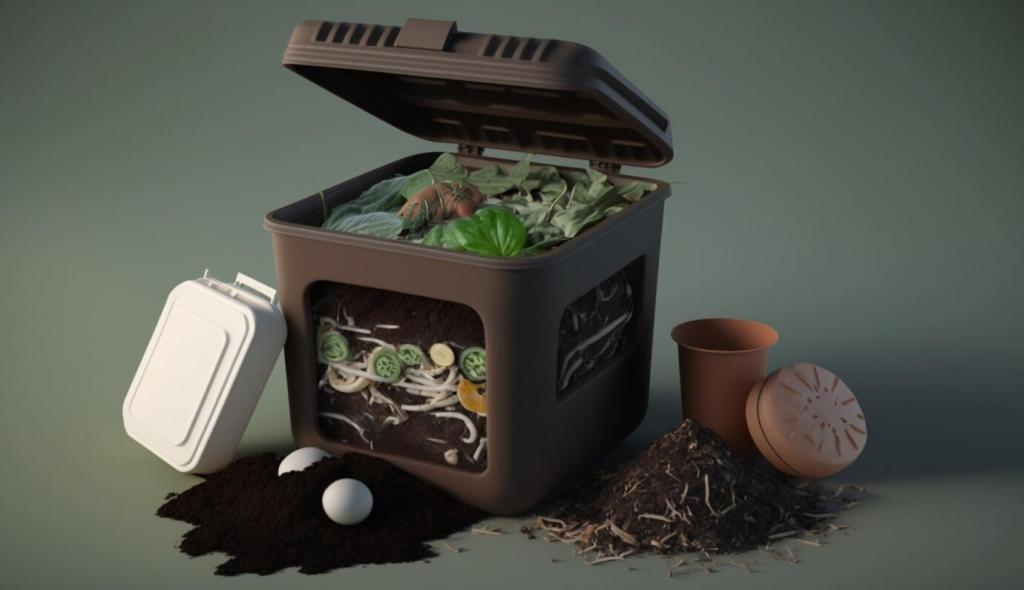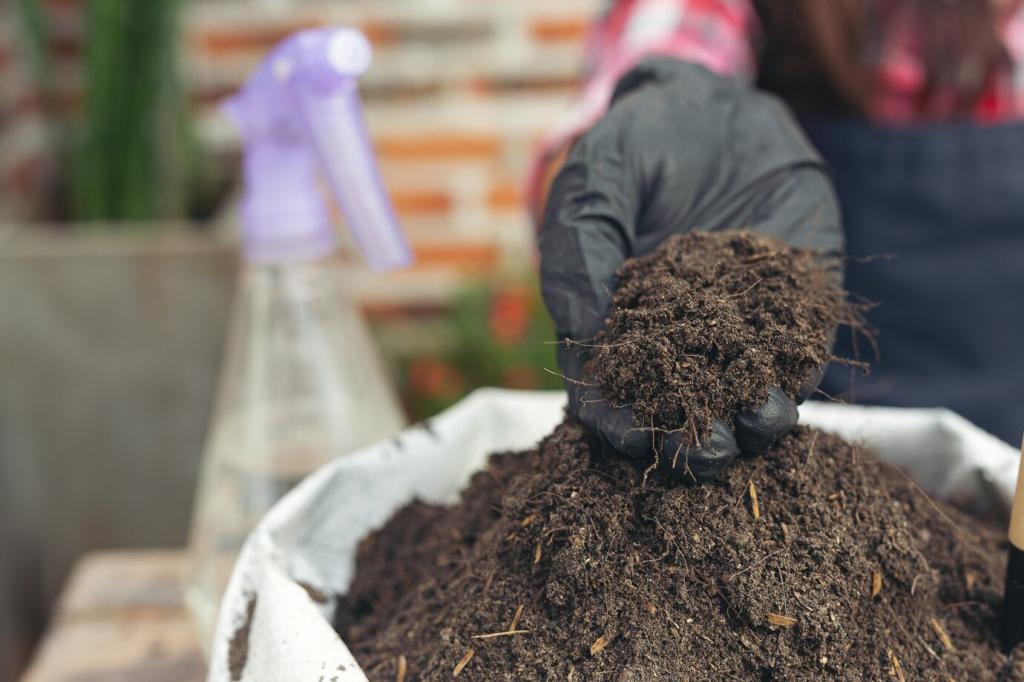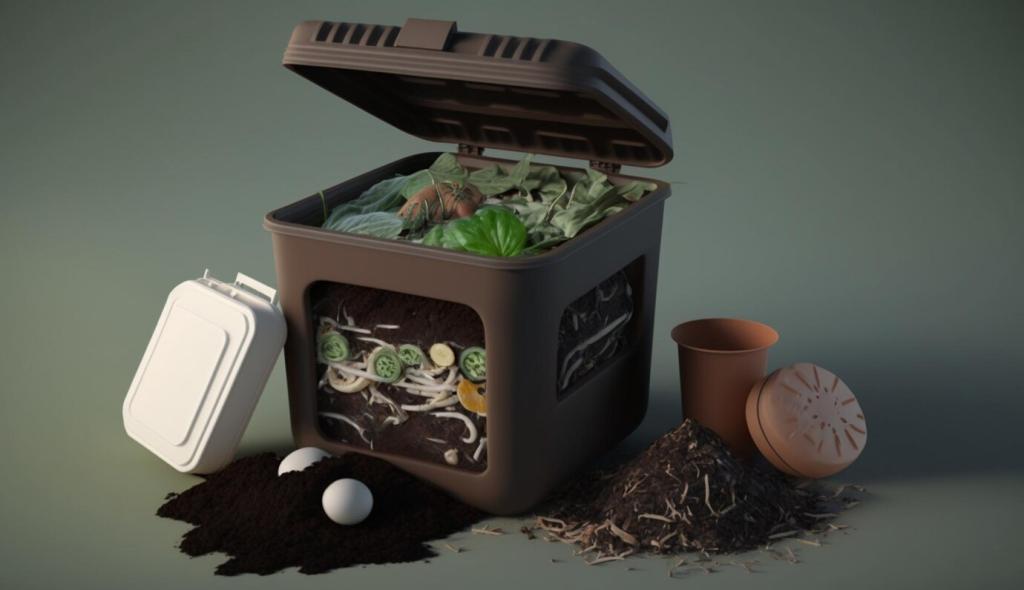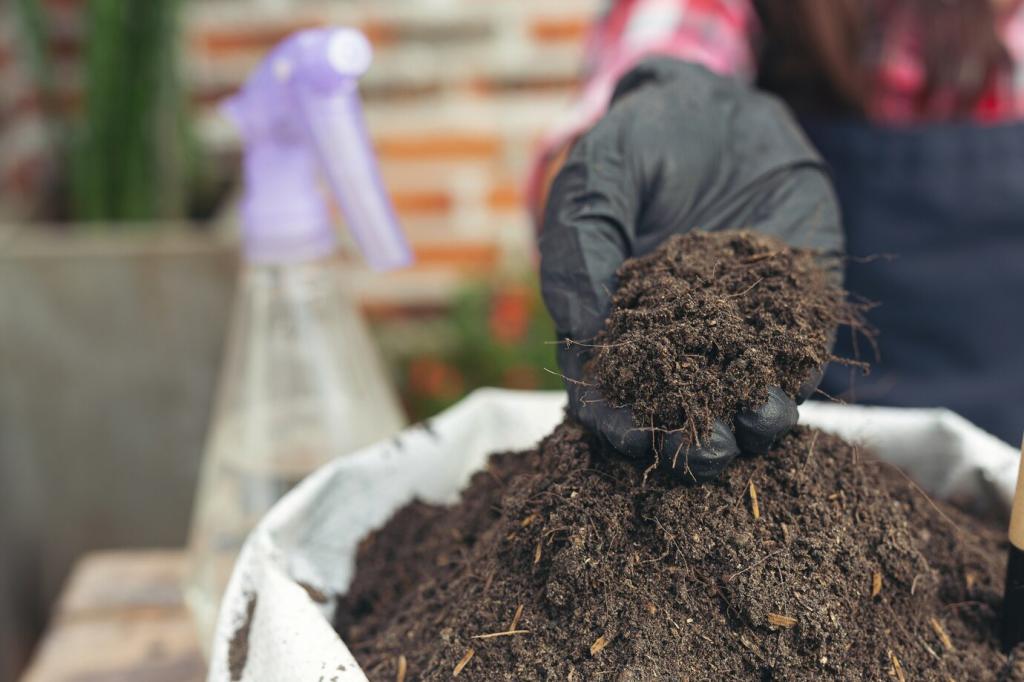Setup and Routine That Fit Apartment Life
Start with a bedding layer of moistened shredded paper or coco coir, add a small amount of finished compost or soil, and ensure ventilation holes are secure against rain and curious city wildlife.
Setup and Routine That Fit Apartment Life
Begin with modest scraps: coffee grounds, tea leaves, banana peels, and veggie trimmings. Chop them small to speed breakdown. Avoid meat, dairy, and oily foods to keep the bin balanced and neighbor-friendly.







